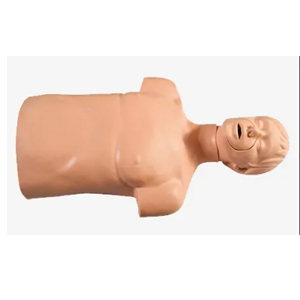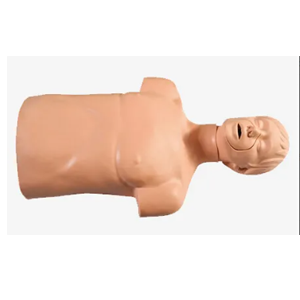The choice of the adult airway infarction and CPR (cardiopulmonary resuscitation) model for skills training is based on several significant advantages and imperatives that make the model an important tool for improving the first aid skills of healthcare professionals and ensuring patient safety.
First, adult airway infarction and CPR models are highly realistic. The design of the model is based on the anatomy of the adult airway and standard procedures for CPR operations, and is able to simulate real-world scenarios of emergency situations such as airway infarction and cardiac arrest. This high degree of simulation allows medical personnel to train in an environment close to actual combat, so as to better adapt to future clinical emergency work.

Secondly, the model provides a safe and controllable training environment. In practice, first aid skills such as airway infarction and CPR require a quick and accurate response from the medical staff. However, these procedures also come with certain risks, such as improper operation may cause harm to the patient. Using a model for training can completely avoid this risk. The model is not harmed and does not impose a psychological burden on the medical staff, thus ensuring the safety and effectiveness of the training.
In addition, the model training is repeatable and consistent. In practical medical work, medical staff may encounter a variety of different types of airway infarction and cardiac arrest patients. The use of the model for training can simulate a variety of different scenarios and situations, help medical staff to practice repeatedly, and improve the proficiency and accuracy of the operation. At the same time, the model can also provide consistent physiological responses and disease states, so that every training can achieve the same effect, thus ensuring the consistency and reliability of training.
Finally, the use of the model also helps to improve the confidence and coping ability of the medical staff. Through continuous practical training, medical personnel can gradually master the correct first aid skills and improve the accuracy and safety of the operation. This increase in self-confidence helps medical staff to be more relaxed and make correct judgments and reactions when facing real patients.
To sum up, the choice of adult airway infarction and CPR model for skill training has several significant advantages, such as high simulation, safe and controllable training environment, repeatability and consistency, as well as improving the self-confidence and coping ability of medical staff. These advantages make the model become an important tool to improve the first-aid skills of medical staff and ensure the safety of patients, and it is of great significance to promote the promotion and popularization of medical first-aid skills.

